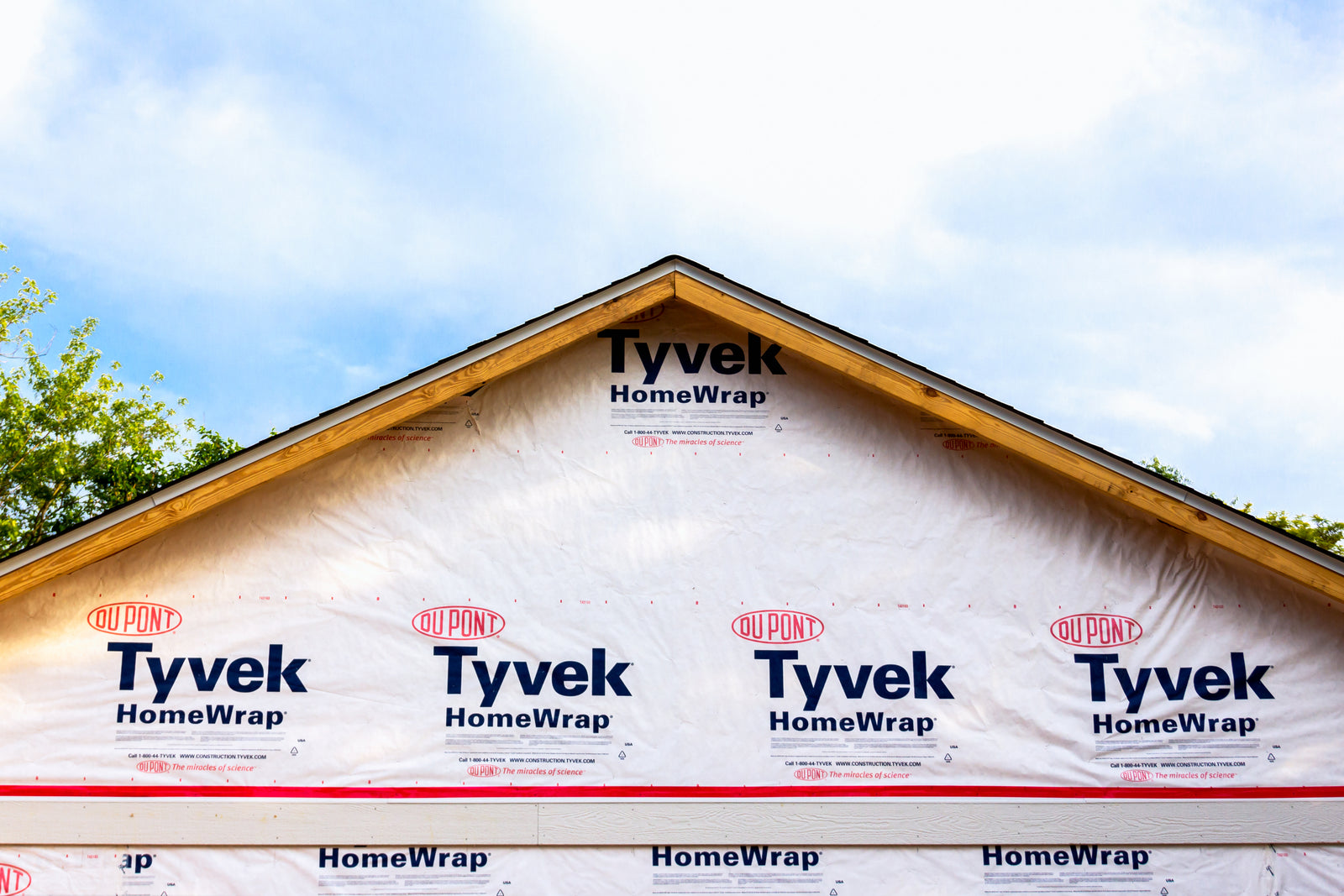Tyvek is one of those products that you might not be familiar with directly but will have seen in action in different ways. One of the most common uses for it is to cover a building while it is under construction to protect it from the elements - this is Tyvek Housewrap in action.
But there’s a lot more this material can do. Let’s learn about it and answer the big question around it - is Tyvek breathable?
What is Tyvek?
If you like the technical answer, Tyvek is a non-woven synthetic substance composed of spunbound olefin fibres. These fibres are 10 times smaller than a human hair and are spun and bonded together in great heat and pressure to make them super strong.
Because the process doesn’t use any binders, the material is classed as chemically inert. It also has minute perforations due to the design of the material so water vapour can permeate it but liquid water cannot.
And because it is basically a thermoplastic, Tyvek returns to a semi-solid state when you apply the right amount of heat. This means that you can easily bond sheets together or shape it around things. You can also get things like Tyvek tape and special bonding adhesives to work with it.
What is Tyvek used for?
There seem to be more things people find to use Tyvek for all of the time. Because it looks like paper but is much stronger and waterproof, it can be used in a huge range of applications.
Originally, it was created to protect buildings that were in construction but not finished. By applying a layer of Tyvek to the outside, the construction crew would protect the inside of the building from the weather.
Another use that we’ve all seen without knowing what it was is in coveralls, those all in one garments used to protect people in lots of industries. From oil workers to car mechanics and even upgraded into HAZMAT suits (those bright yellow ones), Tyvek can act as protective gear for people.
Other examples of the diverse uses of Tyvek include:
- Medical packaging to protect from water and keep sterile
- Banknotes in Costa Rica
- Driving licenses in New Zealand
- Fashion ranges (one US company still offers Tyvek shorts!)
In Tyvek breathable?
All Tyvek products are breathable because of those tiny perforations created in the manufacturing process. These allow water vapour to pass through the material but not liquid water. This maintains the waterproof properties of the material but means if you use it for any purpose that requires it to be breathable, it is perfect.
An example is the Tyvek Supro breather membrane. This is used on roofs and is placed under the roofing material. It creates an airtight but vapour permeable membrane that resists the water and works on both pitched and flat roofs. It avoids the need for soffits or tile ventilation because it is breathable.
Top-quality material
Tyvek is a breathable yet waterproof, tough yet workable series of products that have countless applications across many industries. The range of products means there is a Tyvek solution for many issues, especially in the construction and building industries.




